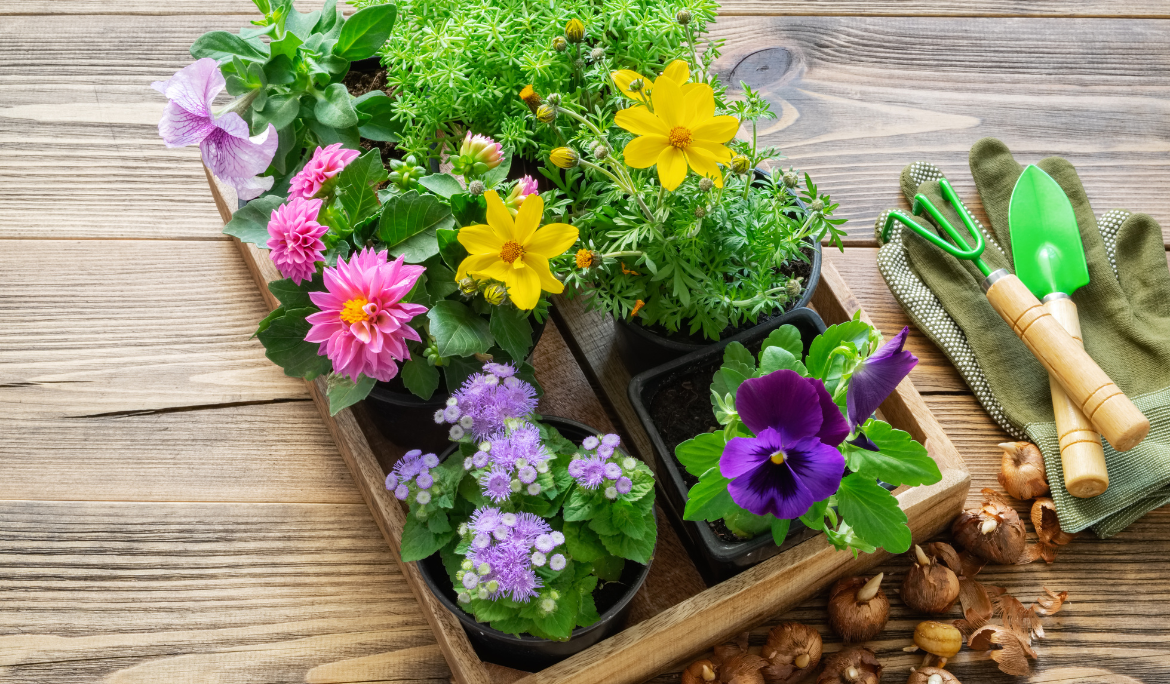Plants have evolved fascinating ways to store nutrients and survive in challenging conditions. Among these survival mechanisms are bulbs, tubers, and rootstocks (also known as rhizomes). These underground storage organs allow plants to withstand periods of drought, cold, or dormancy, and are key to their reproduction and growth. Though they serve similar purposes, each of these structures is unique in form and function.
Bulbs: Nature’s Hidden Gem
A bulb is a rounded underground storage organ that consists of layers of fleshy scales (modified leaves) surrounding a central shoot. The bulb is designed to store energy, allowing the plant to survive unfavorable conditions and sprout again when the environment becomes more suitable.
Key Characteristics:
- Structure: Bulbs are composed of a basal plate (a short stem), scales (fleshy leaves), and a developing flower bud or shoot in the center.
- Growth: Bulbs remain dormant during certain seasons, and when the conditions are right, the plant sprouts from the center of the bulb.
- Examples: Onions, tulips, daffodils, and lilies are well-known bulbous plants. The layers of an onion are a perfect example of how bulbs are structured with concentric rings.
Types of Bulbs:
- True Bulbs: These include plants like tulips and daffodils, where the layers store all the nutrients needed for the plant’s growth and blooming cycle.
- Corms: Sometimes mistaken for bulbs, corms are solid, swollen stems with a fibrous outer layer. Examples include crocus and gladiolus.
Tubers: Nutrient-Packed Powerhouses
A tuber is a thickened part of a plant’s stem or root, which serves as an underground storage organ. Unlike bulbs, tubers do not have layers; instead, they are solid and store starches and other nutrients to support the plant during dormancy or periods of adverse conditions.
Key Characteristics:
- Structure: Tubers are enlarged, solid portions of underground stems or roots with “eyes” (buds) scattered across the surface. Each eye can sprout into a new plant.
- Growth: Tubers regenerate by sprouting from their buds. The eyes of a potato, for instance, are growth nodes that can produce new plants.
- Examples: Potatoes, yams, and Jerusalem artichokes are common examples of tuberous plants.
Rootstocks (Rhizomes): Underground Stems on the Move
Rootstocks, also known as rhizomes, are horizontal, underground stems that grow laterally, sending out roots and shoots from their nodes. Unlike bulbs and tubers, rhizomes spread underground and allow plants to propagate horizontally, often forming large colonies of plants.
Key Characteristics:
- Structure: Rhizomes grow horizontally beneath the soil, producing roots on their underside and shoots that emerge from the ground.
- Growth: This underground stem allows the plant to spread and colonize new areas, helping it survive and propagate over large distances.
- Examples: Ginger, bamboo, and iris are well-known plants that grow from rhizomes. The ginger root that we use in cooking is actually a rhizome.
The Role of These Structures in Gardening and Agriculture
Understanding bulbs, tubers, and rootstocks is essential for successful gardening and farming. These storage organs make certain plants highly resilient and easier to grow in various climates and soil conditions.
- Bulbs: Ideal for ornamental plants like tulips and lilies, bulbs are planted in the fall to bloom in spring, adding beauty and color to gardens.
- Tubers: Vegetables like potatoes and sweet potatoes are grown from tubers and are staples in many diets around the world.
- Rootstocks/Rhizomes: Plants like ginger and bamboo, which grow from rhizomes, are prized for their fast-spreading nature, making them excellent for covering large garden areas or for use in food and medicine.
Conclusion
Bulbs, tubers, and rootstocks are nature’s brilliant solutions for plant survival and reproduction. Each plays a unique role in storing nutrients and ensuring that plants can thrive year after year. Whether you are growing ornamental flowers, cultivating edible crops, or expanding your knowledge of plant biology, these underground storage organs demonstrate the incredible adaptability and resilience of plants. Understanding their differences can help gardeners and farmers make informed choices when planting and caring for their crops or gardens.




3 Comments
seomx
There are many variations of passages of Lorem Ipsum available, but the majority some form, by injected humour, or randomised words which.
seomx
Injected are many variations of passages of Lorem Ipsum available, but the majority some form, by injected humour, or randomised words which.
seomx
Randomised words which there are many variations of passages of Lorem Ipsum available, but the majority some form, by injected humour, or.